|
Home
> All Guitars >
JET Guitars >
General Info
|
The headstocks of
JET guitars are topped with the same highly figured maple as the
body. Here's a headstock with all the inlays done, before grain
staining.
Notice the truss rod cover is recessed. This may
seem like a small feature but the devil is in the details.
JET guitars are well known for the fine detail work that Jeff does on
each guitar.
In fact Jeff was probably the first luthier I know who bothered to
come up with innovative ideas to improve the cosmetics, fit & finish
!!! |
 |
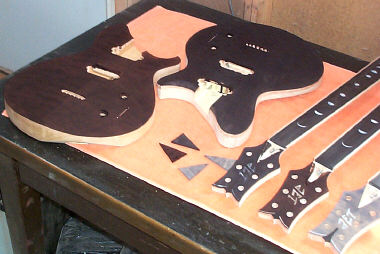 |
In order to achieve the most striking quilt or
flame maple appearance, the top wood of both the body and headstock
is grain stained. This initial stain is black, or a dark mixture of
blue, brown or red, depending on the final color desired. The color
of the raw wood is also taken into account for color selection as
some stains work much better on certain shades of maple. |
|
The deep grain stain is allowed to penetrate and
dry before sanding. Jeff uses water soluble aniline stains because they
are resistant to fading over time. The surface is then sanded
lightly or heavily, depending on the color recipe being used. Then
the body and neck are both sanded through to a fine grit.
Jeff's necks feel just as good as my famous
1500 G neck that requires
an unfinished neck to get the full effect. I have
customers that send in their PRS & Fender guitars from all over the
world to have that treatment done to their guitars.
Ed Roman |
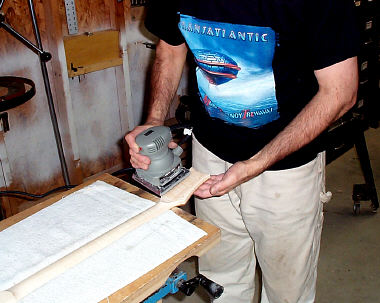 |
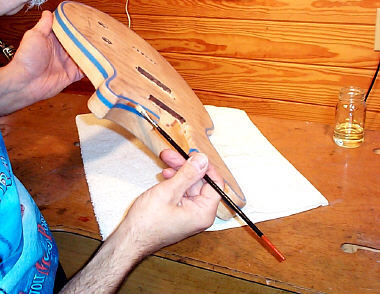 |
The natural wood scraped binding in the body, neck
and headstock are painstakingly masked and sealed with lacquer.
This
is one of those labor intensive procedures that simply can't be done
any other way, which is why some luthiers decide not to do it in
their instruments. Again this is one more reason
Jeff's guitars outshine much of the competition. |
|
The final top color and the back color is
applied. The back is stained using Jeff's famous highly sought after hallmark red mahogany
formula, which looks as great over the maple neck as it does on the
Korina or Mahogany body.
Although it will not interfere with the
glue, care is taken to leave the joint areas unstained anyway. |
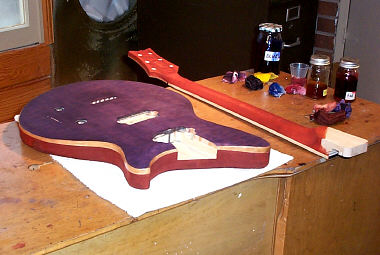 |
|
This is the fretting work area with some typical
fret nipping and shaping tools. The frets are individually hand
fitted and installed using an arbor press before the neck is glued
to the body. |
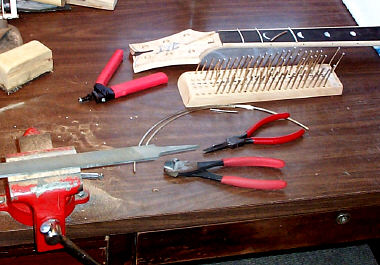 |
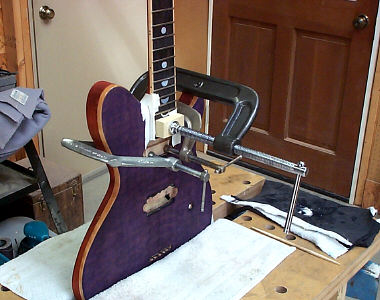 |
Finally the neck and body are forever to be
joined as one, using a special proprietary cross linking polyvinyl
acetate glue, It doesn't foam like polyurethane glue, which would ruin
the colors in this area. Curing is a minimum of 24 hours and
sometimes two days.
Many of my readers know that I generally do not favor set neck
construction due to glues being so thick and stifling the tone.
The JET is the only exception to this rule. I am thinking that
possibly Duesenberg has something similar. Based on how good
they sound.
Ed Roman |
|
Each instrument is sprayed with a light coat of
urethane grain sealer, then a poly bonding agent, then two
coats of poly sanding sealer. After curing the instrument is
hand sanded, and then sprayed with 6 coats of very high quality poly resin
clear coat for the body and 3 coats for the neck. |
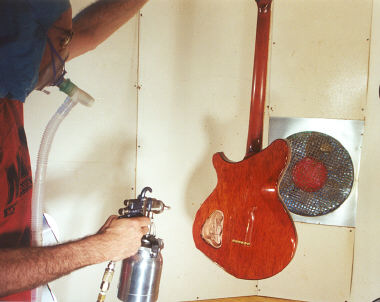 |
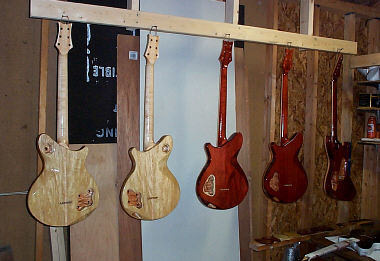 |
Here are some 'victims' hung up after being
sprayed. They must be hand sanded between coats.
Jeff rarely does more than 4 guitars at a time and he generally can
only build 4 guitars a month. |
|
After a minimum of a week, the fully cured
polyester finish needs to be rubbed out and buffed.
This is the most
time consuming operation in guitar making, A lot of builders go for
nitrocellulose clear coating because it is easy to buff.
But it's not
nearly as durable a finish and dents easily compared to polyurethane. |
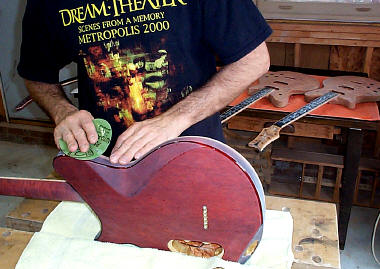 |
 |
Most of the rubout is done by hand, progressing
through six grades of silicon carbide wet-or-dry. The air sander
helps it go faster on the larger areas of the front and back.
The paint quality is amazing on a JET guitar. Jeff has a great eye
for using color combinations that are absolutely striking. |
 |
Four grades of buffing compound (combined with an
'Armstrong' buffing technique) produce a smooth, mirror like finish.
JET guitars are among the most beautifully stained guitars that we
sell. Occasionally I can talk Jeff into staining & finishing a
couple of my Quicksilver's. Usually the customers who
insist on the JET finish are already proud JET owners. |
|
The control cavity is fully shielded using two
coats of Electro Dag conductive paint.
Shielded cable is used for wiring runs
beyond the main cavities, so there is no chance of stray EM signals
being picked up. |
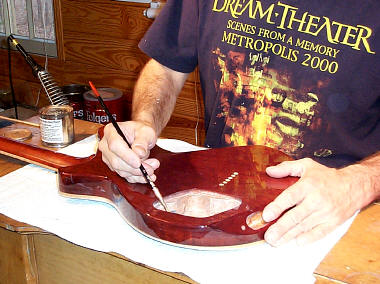 |
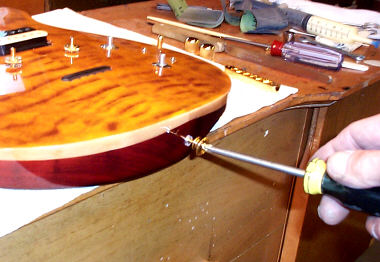 |
The final wiring and assembly goes pretty fast,
compared to rubout and buffing of four guitars which takes almost a
week.
Instead of felt washers under the strap buttons
Jeff uses soft
clear plastic washers. |
|
After seeing the T-shirts, you have probably
figured out what kind of music plays in the JET shop! |
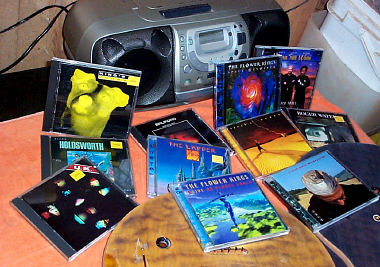 |
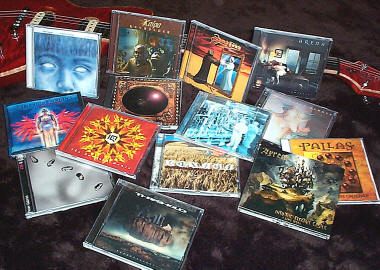 |
Jeffrey describes why he likes Progressive Rock
in 20 words:
"Pop music is what it sounds like at the county fair.
Prog Rock is what it sounds like in Heaven."
Jeff has built guitars for some of the Worlds top Prog Rock Artists. |
|